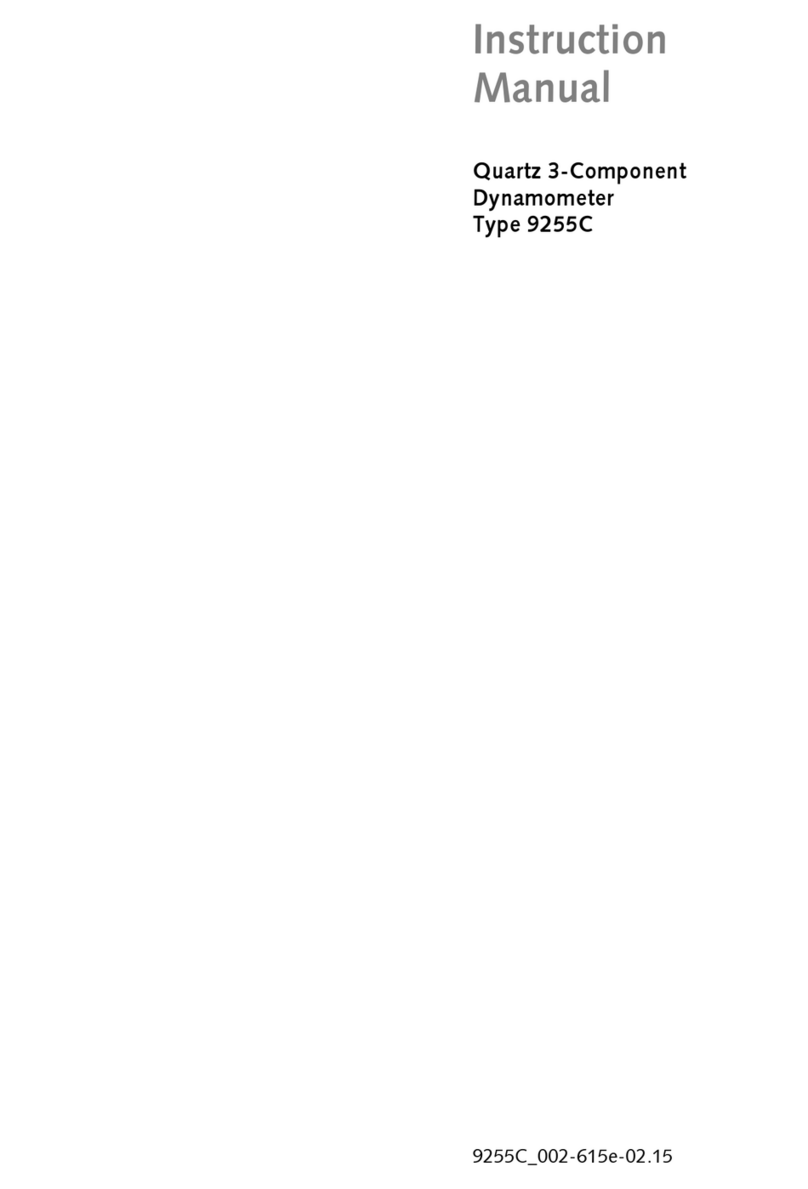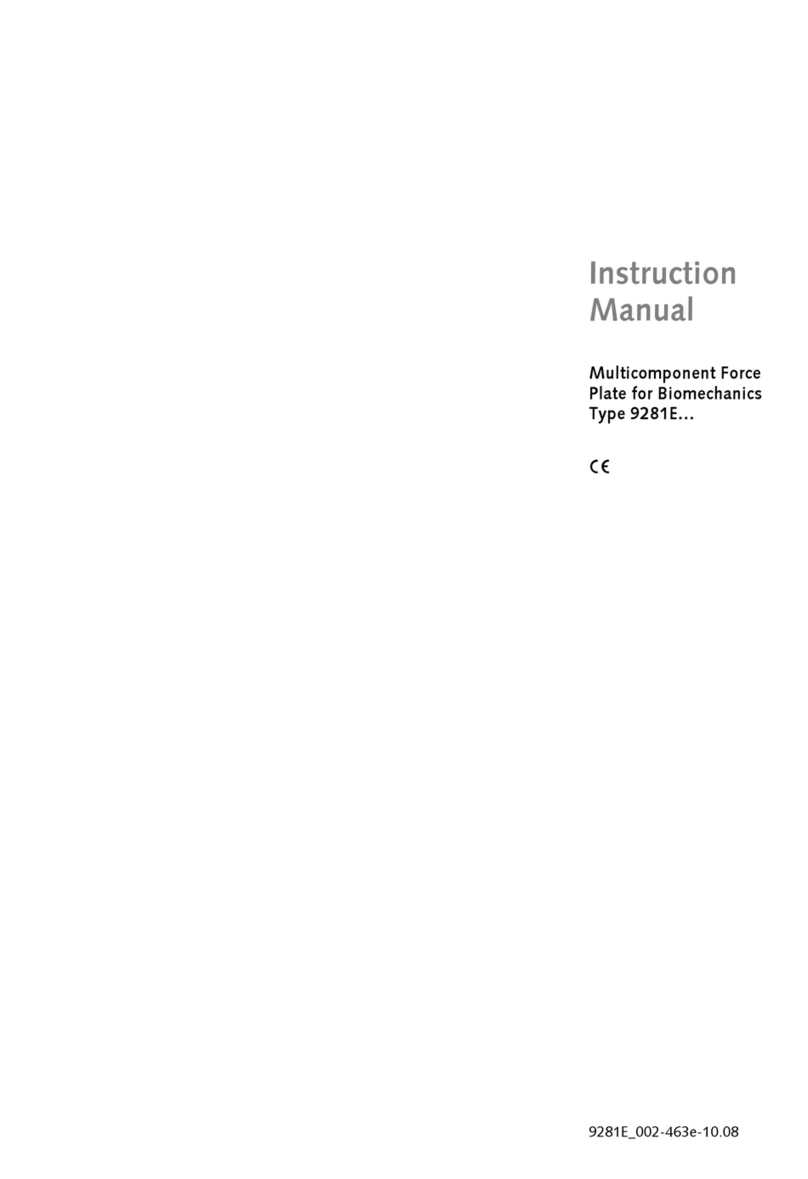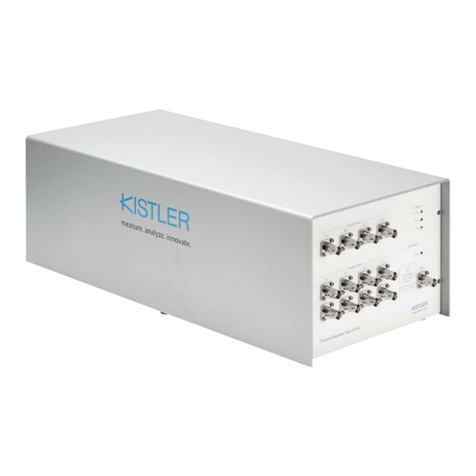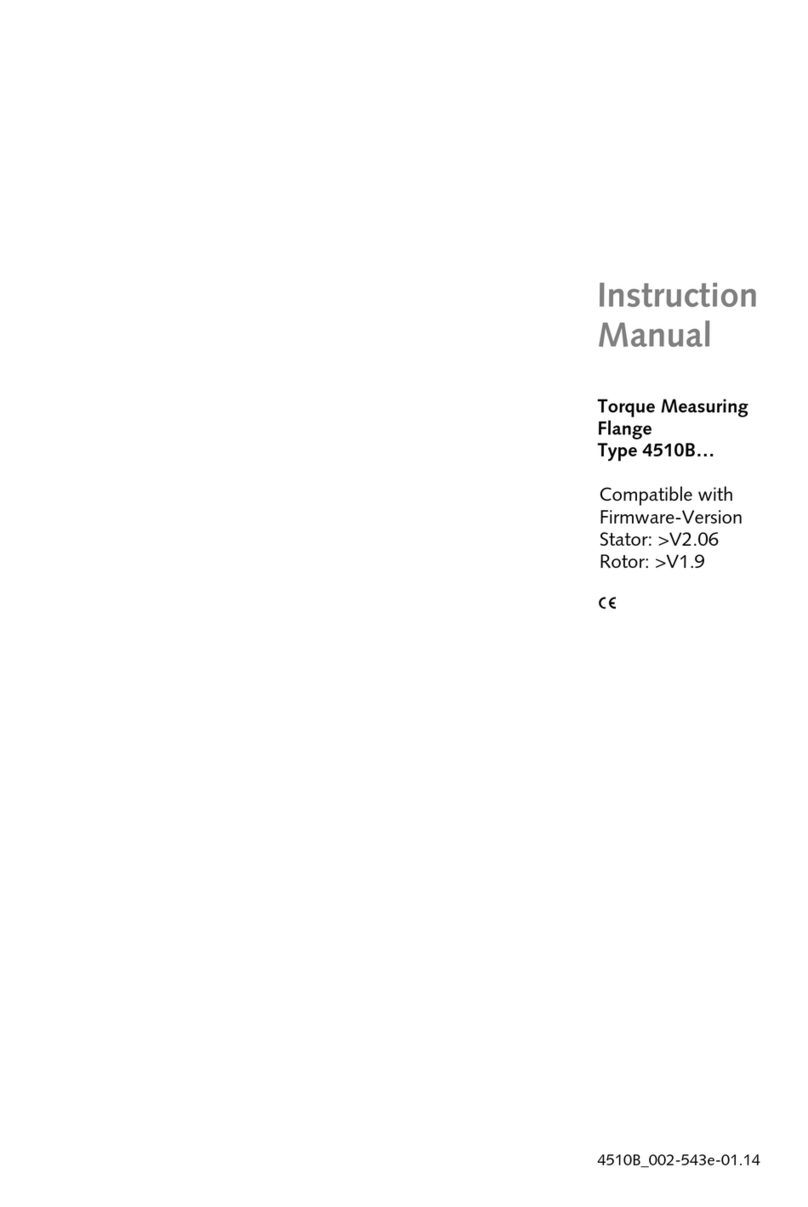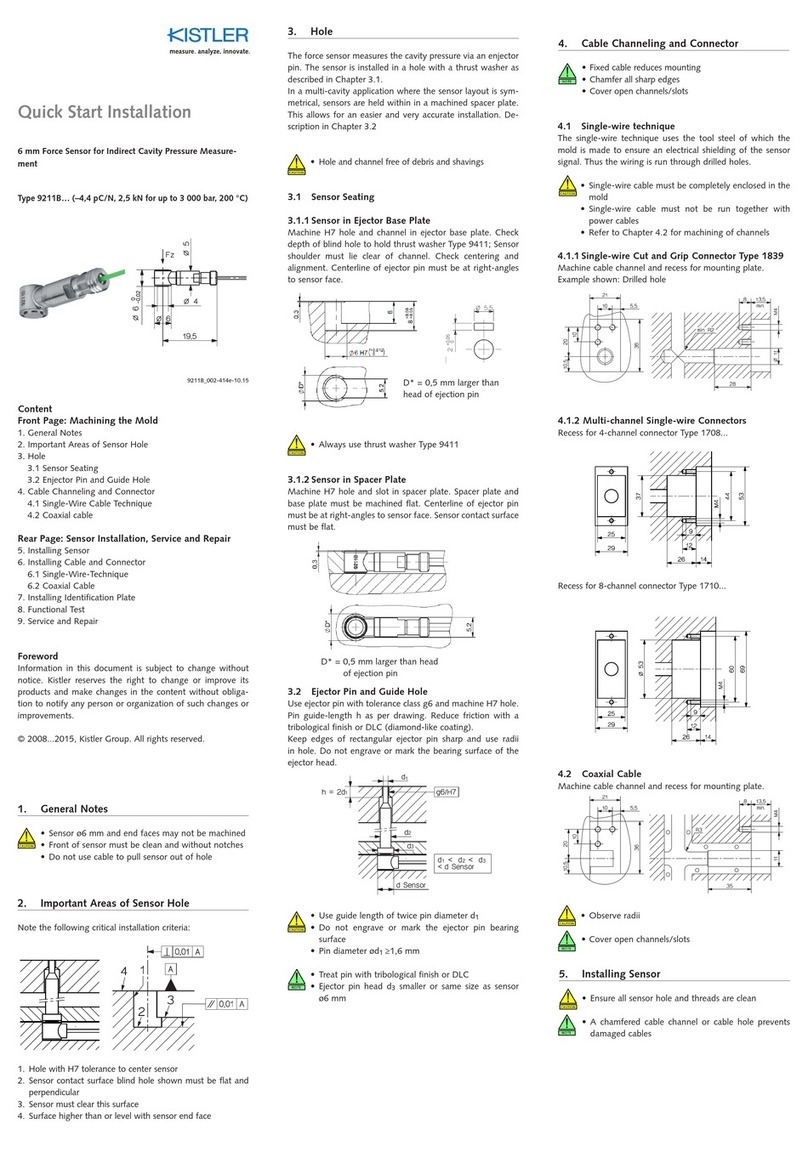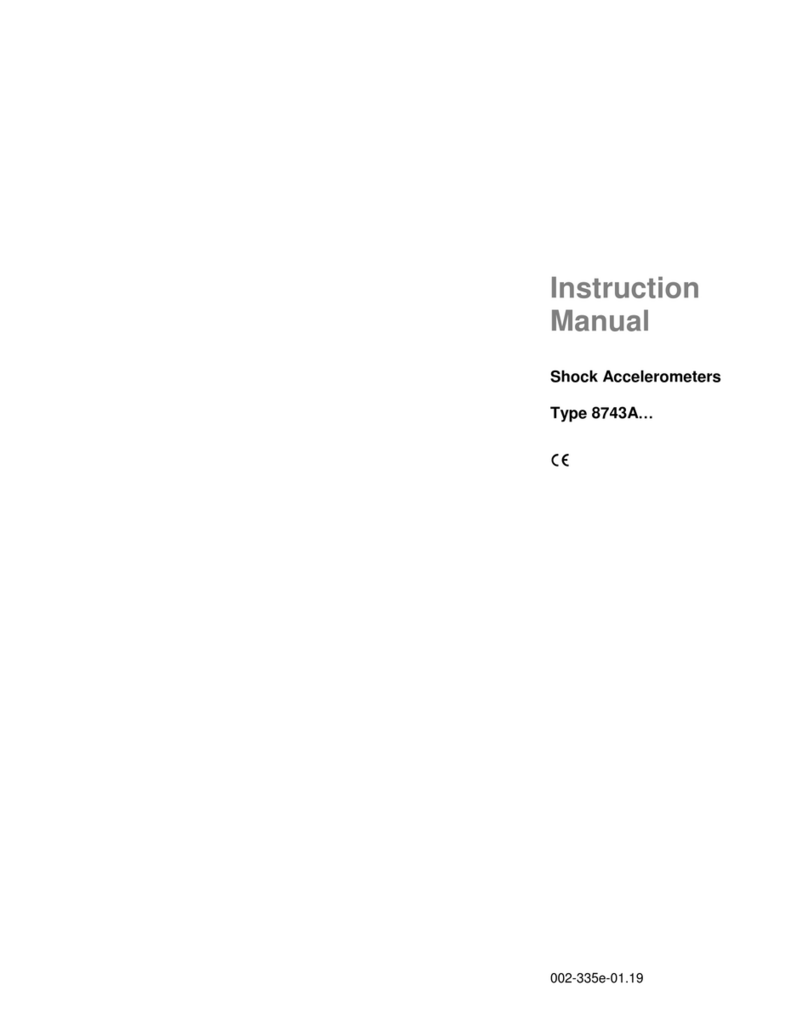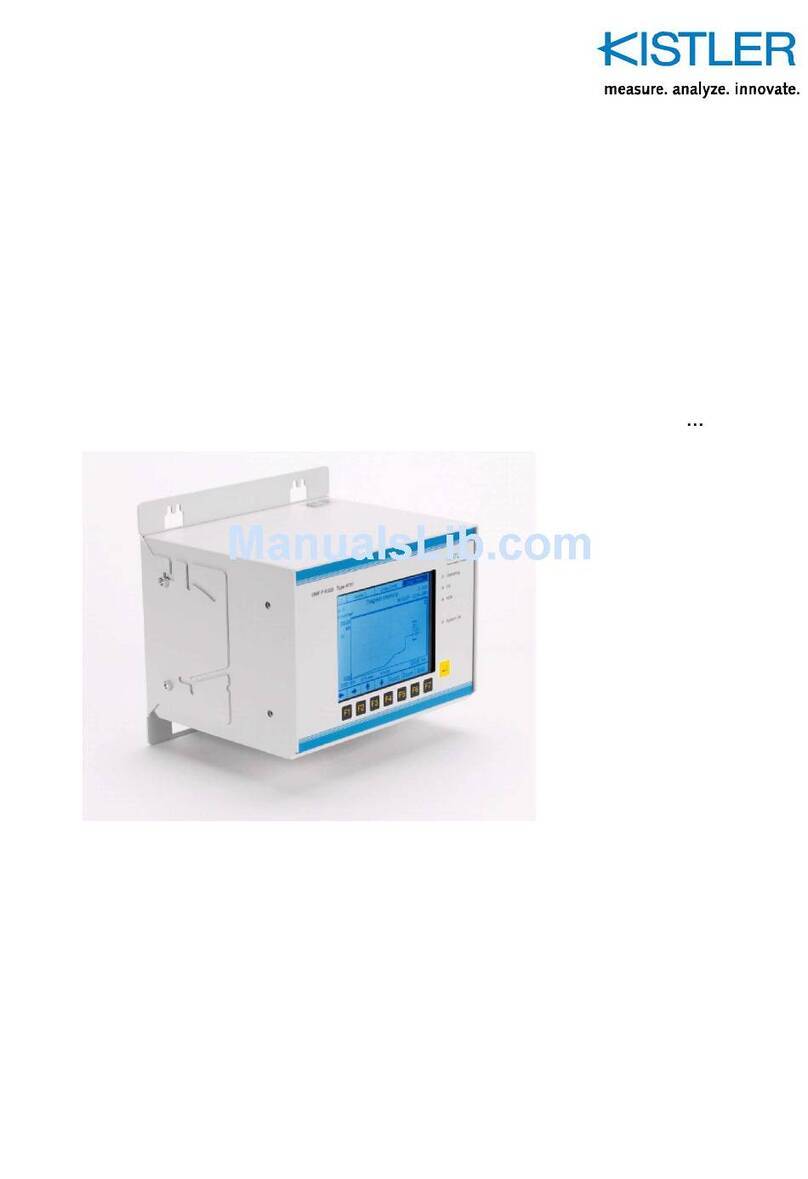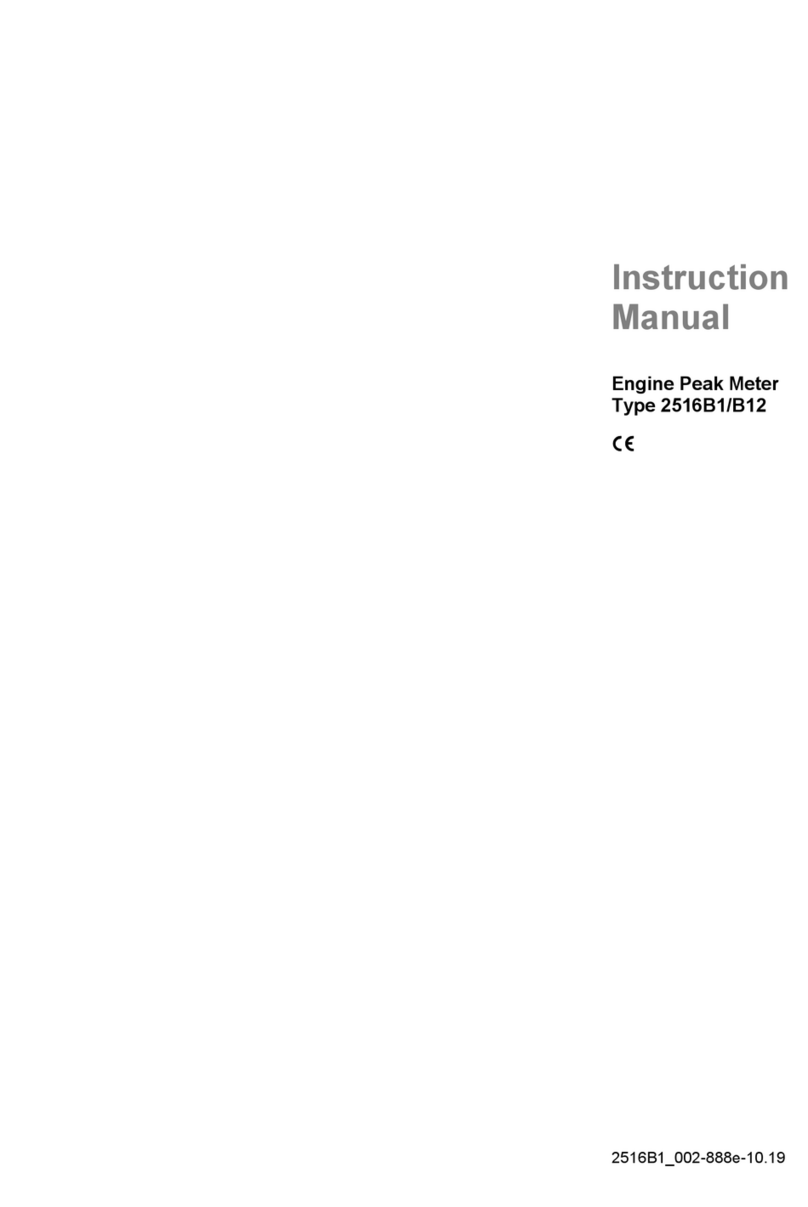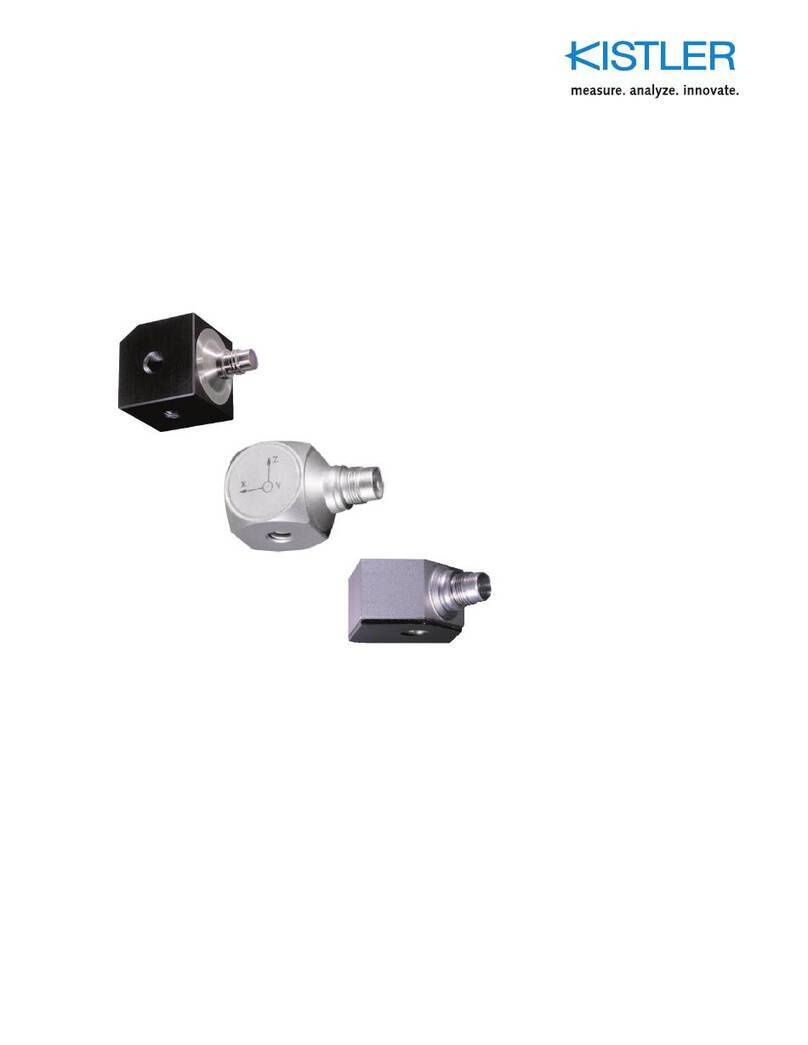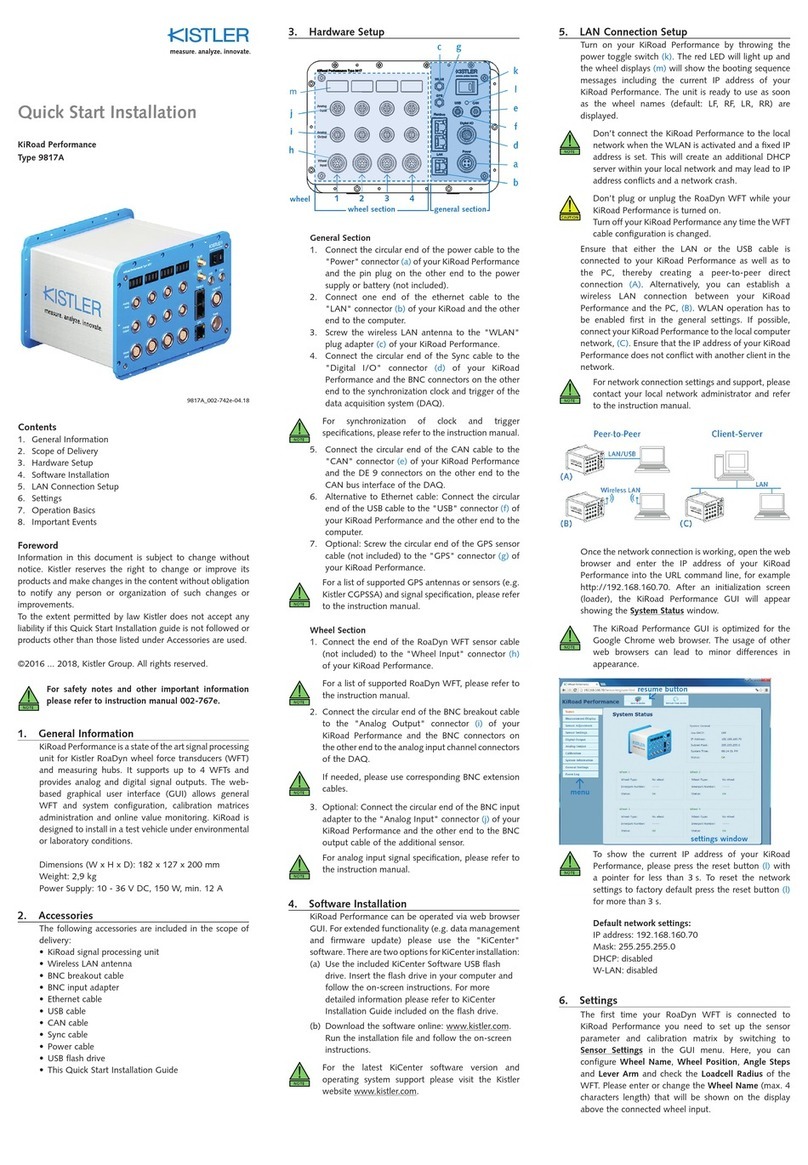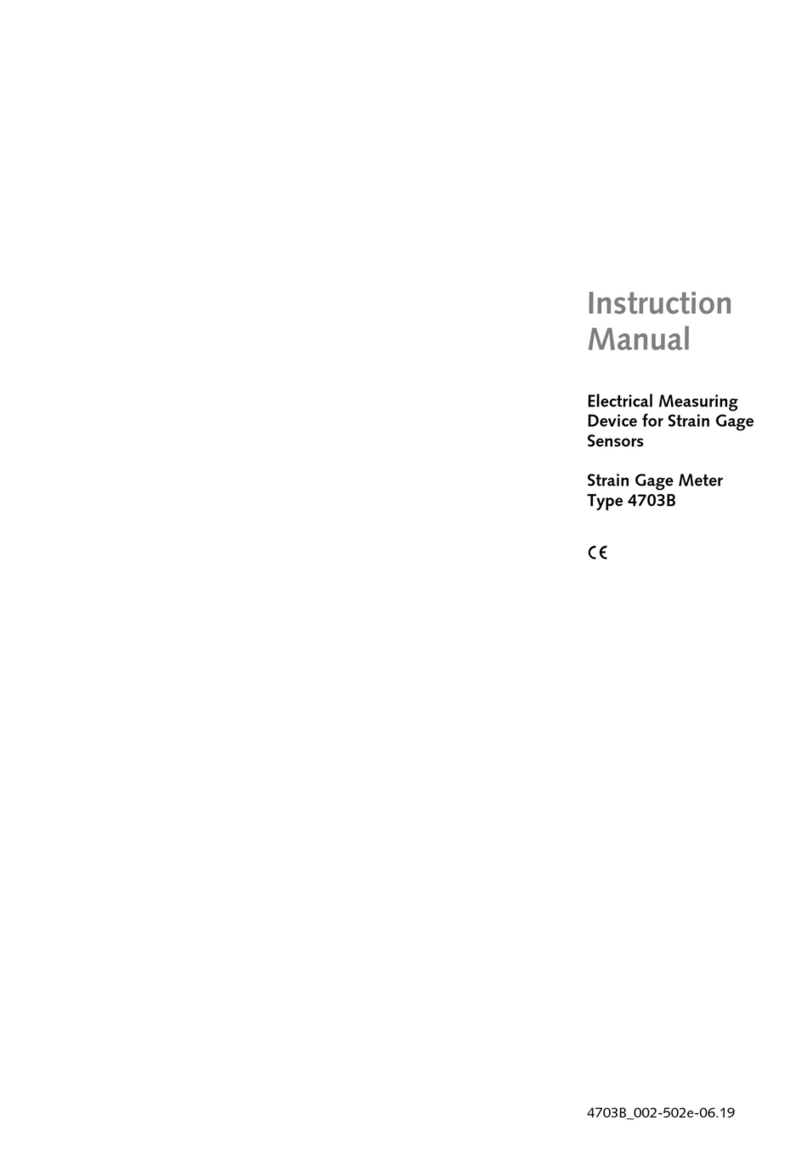
Kistler Group
Eulachstraße 22
8408 Winterthur, Switzerland
Tel. +41 52 224 11 11
info@kistler.com www.kistler.com
2549A_012-053e-05.23 © 2023 Kistler Group
At the time of purchase, each Kistler product is compliant
with the necessary and applicable safety regulations and
all other relevant requirements. Every product is in perfect
condition with respect to safety requirements when it leaves
Kistler’s factory.
7.2 Setting up and using your product
Only qualified individuals with the necessary technical know-
how are allowed to install and operate Kistler products.
These qualified individuals must adhere to all requirements
contained in this safety and warning information and in the
applicable instruction manual for the respective product.
They must also comply with the applicable national safety
provisions for installation and operation in each case.
If a product is not installed, used or maintained in the proper
manner, this could result in serious injuries or fatal accidents
and damage to the product and its surroundings.
Please check for any damage to the packaging before
unpacking the product. Any damage found must be
reported to the shipping company and the Kistler Sales
Center or its distributor.
The delivery scope must be checked before starting to set up
the product. If a part is missing, the responsible Kistler Sales
Center or its distributor must be notified.
If the product has visible signs of damage, no longer works,
is stored for lengthy periods in unfavorable conditions
and/or was exposed to major stresses during shipping,
safe operation is no longer guaranteed and the product
must immediately be returned for repair to Kistler or the
responsible distributor.
The product may not be disassembled, opened, repaired or
otherwise modified because this may impair its operation
and, in particular, can result in electric shocks. Any attempt
to open or modify the product or to damage or remove
labels will automatically result in the voiding of all warranty
claims.
The product must not be used in potentially explosive
environments unless it is specifically designated for such use.
7.3 Disposable and rechargeable batteries
Please note the following points if the product contains
disposable or rechargeable batteries:
Incorrect use of disposable or rechargeable batteries may
result in injury, death, material damage or damage to
the respective product due (for example) to battery fluid
leakages, fire, overheating or explosion.
Leaking battery fluid is corrosive and can be toxic. It may
result in burns on the skin and eyes and is damaging to
health if swallowed. The following instructions must be
followed to minimize the risk of injury:
• Remove disposable or rechargeable batteries from the
device when they are empty, or if the device is not being
used for a lengthy period.
• Old, weak or empty disposable and rechargeable batteries
should be disposed of according to local or national
regulations or should be recycled directly.
• If a disposable or rechargeable battery leaks, it must
be removed by following the steps in the installation
procedure in reverse order. When doing so, please ensure
that the leaking fluid does not come into contact with skin
or clothes. If the fluid does come into contact with skin or
clothes, immediately rinse the affected areas thoroughly
with water. Clean the battery compartment with a dry
cloth before inserting new disposable or rechargeable
batteries. Please follow the recommendations of the
disposable or rechargeable battery manufacturer.
• Disposable and rechargeable batteries must not be
opened, perforated, damaged or heated.
• Disposable and rechargeable batteries must not be
exposed to direct heat or fire.
• Disposable and rechargeable battery-driven equipment
must not be exposed to direct sunlight for lengthy periods.
• Different types of new and old disposable or rechargeable
batteries must not be mixed.
• The connections of rechargeable or disposable batteries
must not be short-circuited.
• Disposable and rechargeable batteries must not be
immersed in water or allowed to become wet.
• Disposable and rechargeable batteries must not be thrown,
struck or exposed to other severe physical influences.
• Disposable and rechargeable batteries must not be
disassembled or modified.
• Disposable and rechargeable batteries must not be charged
close to fire or in hot environments.
• Do not recharge batteries if they are not specifically
designed to be rechargeable.
• Rechargeable batteries are highly sensitive, and they may
expand and explode if handled incorrectly.
• Rechargeable batteries must only be charged with
accessories designed for this purpose.
• Rechargeable batteries must be protected against major
temperature fluctuations, impacts, overheating and all
other external influences that may have an effect on the
function of the rechargeable battery or the device.
7.4 Transportation and storage
During storage and operation, the specifications on ambient
temperature stated in the technical data must also be
observed. The product may be permanently damaged if the
permissible ambient temperature is exceeded to a significant
extent.
The product may only be used under the specified operating
conditions; in particular, high relative air humidity and
temperature fluctuations that might result in condensation
should be avoided.
Under no circumstances must the protective ground
conductor be interrupted or rendered ineffective. Its purpose
is to provide protection against electric shocks and it must
therefore be connected to the relevant equipment.
Defective fuses must only be replaced by appropriate
substitute types with the specified current rating. “Repaired”
fuses must not be used, and fuse holders must not be short-
circuited.
Do not perform tuning, maintenance or repair work on live,
open devices.
7.6 Electromagnetic compatibility
To ensure that electromagnetic compatibility (EMC) is
maintained for the entire measuring chain, particular
attention must be paid to connection of the inputs and
outputs of the cable screen, and to the cable installation:
• Cables must not be run parallel to wiring that causes
interference.
• Only the supplied or optionally available cables must be
used.
• Please ensure a reliable connection between shielding,
connector boxes and device enclosures.
• Machinery and hardware must also comply with the EMC
standards.
7.7 Software upgrades and updates
The most recent software and firmware available on the
Kistler website must always be used.
Kistler accepts no liability whatsoever for direct or
consequential damage caused by products with outdated
firmware.
7.8 Disposal information for electrical equipment
The product must not be disposed of as
domestic waste. It must be taken instead
to a suitable collection point for the
recycling of disposable or rechargeable
batteries, electrical and electronic
equipment. Sorting, collecting and
recycling helps to preserve natural
resources and prevents impairment of human health and the
environment by hazardous substances that may be released
through the incorrect disposal of disposable or rechargeable
batteries, electrical and electronic equipment.
Please contact your Kistler Sales Center if you have any
questions about disposal.
Contact addresses and further information are available at
this internet address: www.kistler.com
7.9 Laser safety
The FSI interrogator is a Class 1 laser product
according to EN/IEC 60825.
Performance of procedures other than those
specified in the product manual, attempting to
operate the FSI interrogator in a disassembled state,
or otherwise accessing the laser directly, might result
in hazardous radiation exposure.
